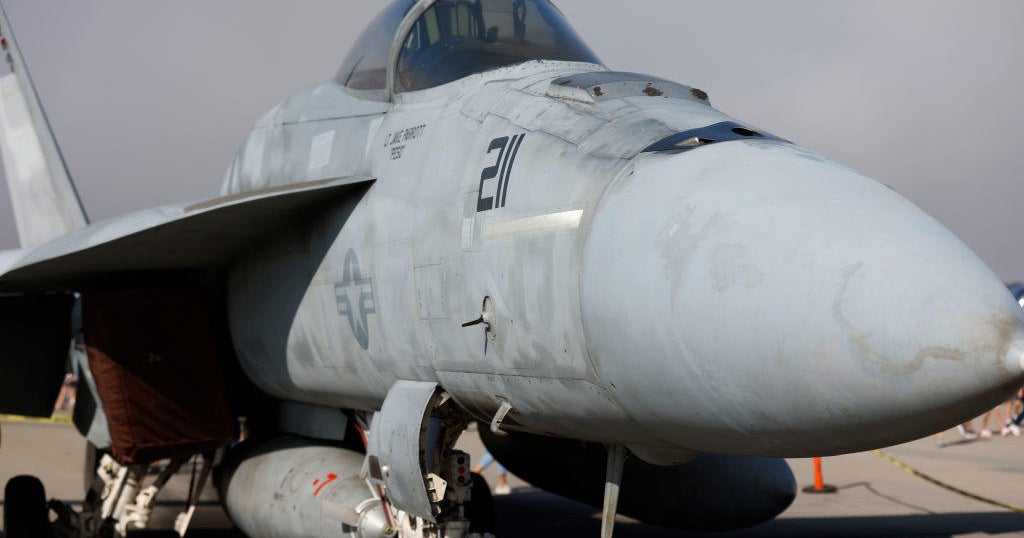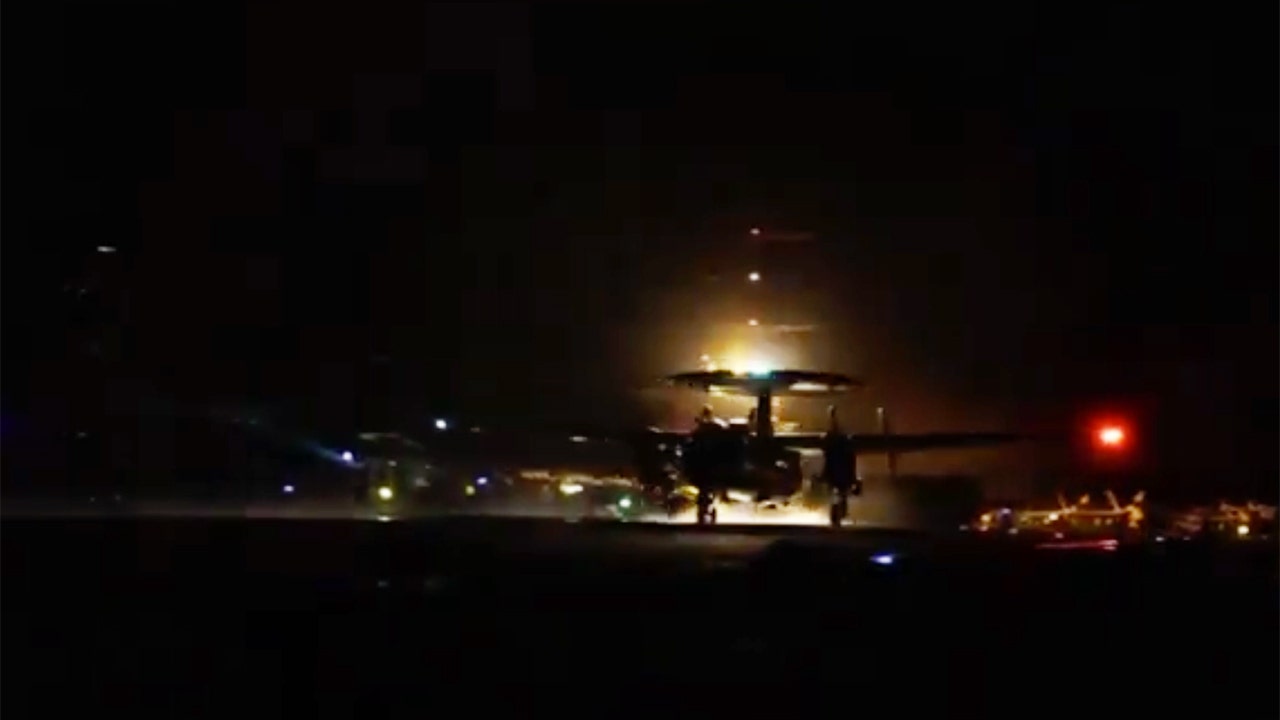World
Satellite photos show US reclaiming World War II airfield for China war
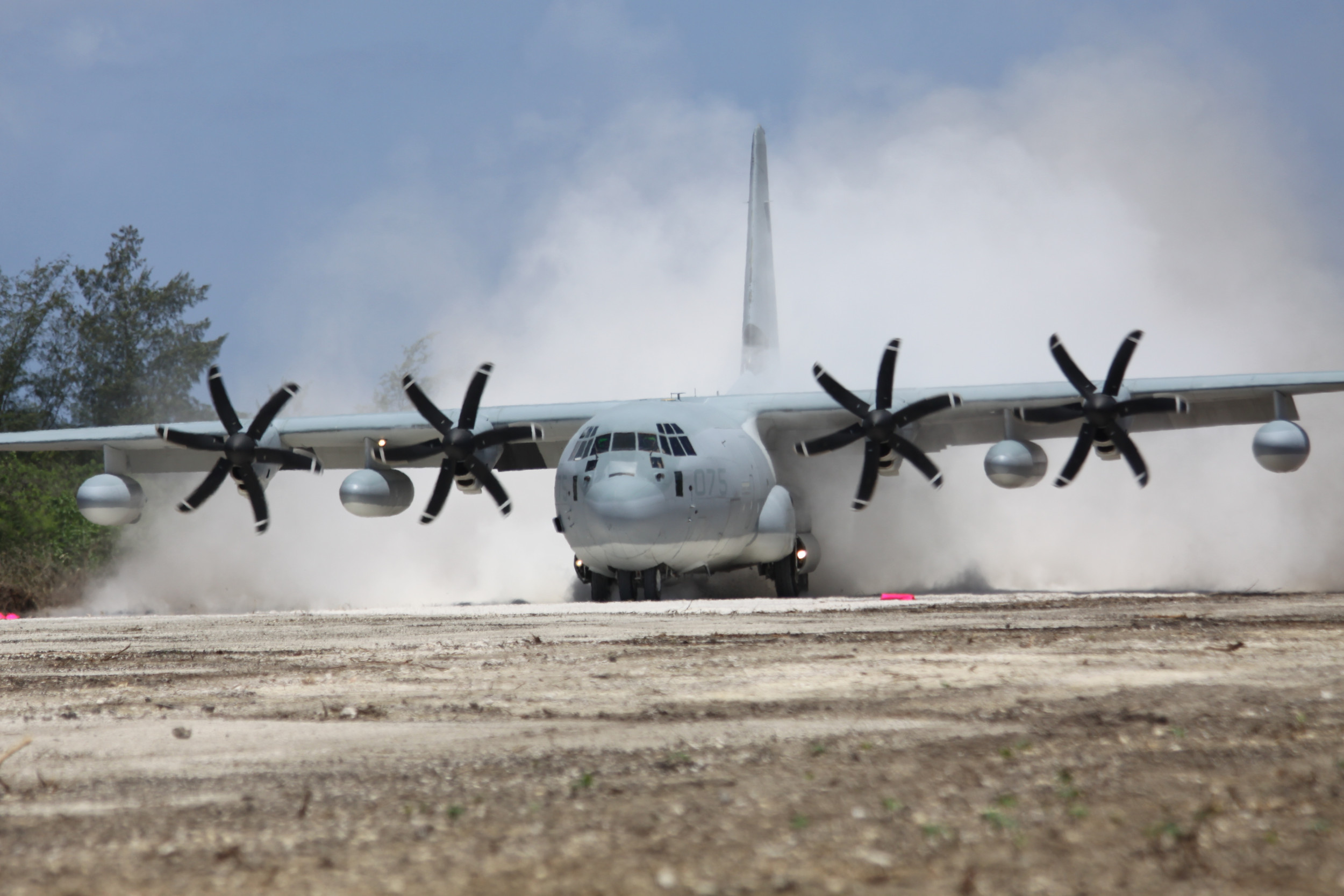
An overgrown airfield on a small island in the Pacific, once instrumental in America’s role in ending World War II, is being reclaimed by the U.S. Air Force as it prepares for a possible future fight with China.
The remote island of Tinian, which is less than 40 square miles, is one of three principal islands in the Northern Mariana Islands, a string of sparsely populated islets in the Western Pacific Ocean that make up the U.S.’s westernmost frontier, along with the major military hub of Guam some 100 miles to the south.
Tinian was known for its strategic value during the war. Due to its proximity to Tokyo—less than 1,500 miles—it later became a staging base to launch bomber attacks on mainland Japan. The island is a similar distance to China and other flashpoints in Asia, with a U.S. Defense Department plan costed at nearly half a billion dollars now preparing it to help the United States deter, or defeat, the Chinese military.
U.S. Naval History and Heritage Command
After the Allies captured Tinian in 1944, the Navy immediately began constructing what was then the world’s largest air base, building over existing airstrips for smaller Japanese fighter planes. North Field alone had four 8,500-foot runways and hardstands that supported up to 265 B-29 Superfortress bombers.
In August 1945, North Field launched the two bombers that carried out the first and only wartime use of nuclear weapons in human history. The dropping of atomic bombs “Little Boy” and “Fat Man” on Japan effectively ended the war and spared American troops from a bloody and costly invasion of the Japanese mainland to force the empire’s surrender.
The island’s two airfields met different fates after the war. West Field, which was built with two parallel runways in the southwest, became part of modern-day Tinian International Airport. North Field became a historic landmark. Now, more than half a century later, unused and in disrepair, North Field is being brought back to life under an Air Force operational concept called Agile Combat Employment, or ACE, which disperses units and capabilities into smaller groups.
Under the Pentagon‘s Pacific Deterrence Initiative, which puts China’s multi-domain threat at the forefront of U.S. defense planning, three projects will add airfield operations to Tinian for refueling, takeoff and landing, and parking, all in support of operations in the vast Indo-Pacific theater.
Drag slider
compare photos

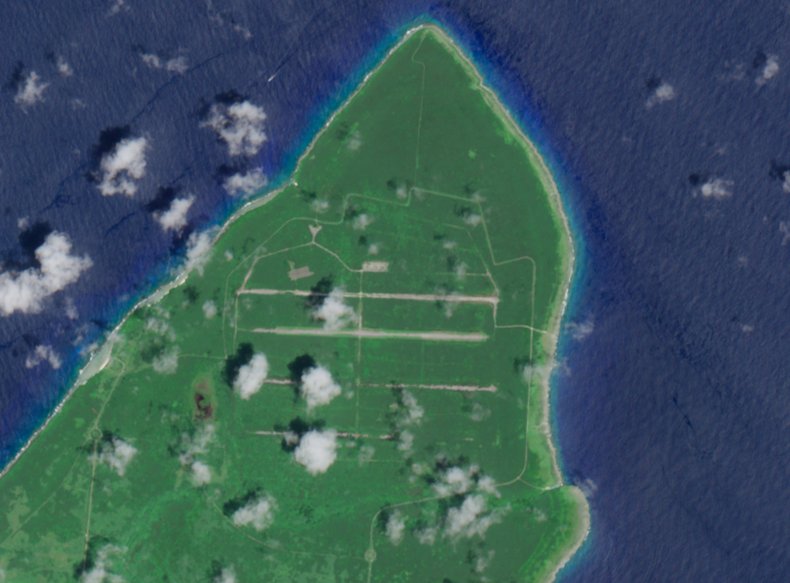

In April, the Air Force said airmen responsible for rehabilitation work on North Field were restoring more than 20 million square feet of degraded pavement. The goal is to have the rejuvenated runway serve as a “power projection platform.” Clearance of hundreds of acres of tropical jungle covering the airfield began in January, and progress has already facilitated austere landings for regional exercises.
The project’s precise completion date is unknown. In spring, Fluor Corp., an engineering company based in Irving, Texas, said it had been awarded a $409 million contract for “pavement and transportation support” in North Field, with scheduled completion in five years.

Lance Cpl. Benjamin Pryer/U.S. Marine Corps
Newsweek‘s review of imagery captured in the past year by the European Space Agency’s Sentinel-2 satellites showed North Field reemerging on Tinian’s surface, with runways and taxiways slowly cleared of overgrowth. Its four parallel runways were visible in photographs taken this month.
Pacific Air Forces spokesperson Capt. Keith Peden confirmed to Newsweek the steady progress at North Field, where significant steps have been taken toward employing ACE. The upgraded and expanded airfield and surrounding facilities—over 20 million square feet of runway, taxiways and parking aprons—will support a wider range of aircraft, allowing the Air Force to “rapidly deploy and sustain forces in diverse environments,” he said.
“These enhancements are designed to increase the airfield’s capacity to handle both routine and contingency operations,” Peden said, whereas North Field currently sees “limited aircraft operations.”
Planning for Tomorrow’s Air War
In line with the Pentagon’s description of China as America’s “pacing challenge,” the Air Force’s ACE guides the service’s reorginization of forces in response to developments such as the advancement of adversary military capabilities.
The doctrine “is designed to increase operational resilience and flexibility by enabling forces to operate from a network of dispersed, austere locations,” said Peden of the Pacific Air Forces, which is a component of the Hawaii-based U.S. Indo-Pacific Command.
He also revealed details about the “expanded divert airfield” at Tinian airport, previously West Field, which will ensure the Air Force can “meet mission requirements” if access to Guam’s Andersen Air Force Base and other Western Pacific locations is
“limited or unavailable.”

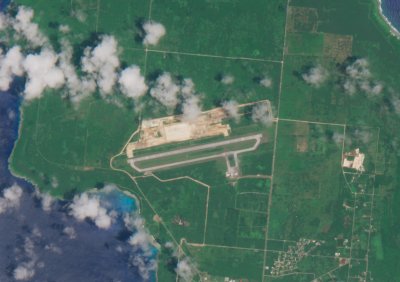
The Northern Mariana Islands and Guam form part of the so-called second island chain, a Cold War defense concept that sought to leverage allied or friendly territories to contain America’s foes in the wider Western Pacific. The two strings, stretching from Japan in the north down to southeast Asia, remain part of a layered strategy to constrain Chinese naval and air activity in wartime.
Planning must account for China’s long-range ballistic missiles, which can reach U.S. military sites throughout the region, including on Guam, which is also home to vital Navy and Marine Corps bases. That Tinian is an ideal staging area for U.S. military power also is part of the thinking: the island is 1,500-1,700 miles from the Taiwan Strait as well as the contested East and South China seas, where Japan and the Philippines—two U.S. treaty allies—have long-running territorial disputes with China.
Today, China’s Rocket Force possesses a variety of conventional and nuclear-armed missiles with a range of up to 3,400 miles. The DF-26 intermediate-range ballistic missile, known colloquially as the “Guam Express,” is thought to be capable of striking the U.S. territory.
The rapidly evolving threat has forced the U.S. military to build new defense architecture on Guam comprising multiple land-, sea- and air-based weapons, such as the Standard Missile 3 and Terminal High Altitude Area Defense, better known as THAAD.
ACE aims to make U.S. military positions even harder to target by decentralizing operations from traditional outposts like Anderson air base—and overseas bases in Japan and elsewhere—to smaller, dispersed locations. Other branches have developed similar doctrines for the Pacific conflict seemingly on the horizon: the Army’s Multi-Domain Operations, the Navy’s Distributed Maritime Operations, and the Marine Corps’ Expeditionary Advanced Base Operations.
Pacific Stepping Stone
The survival of American air and naval power is crucial to any U.S. plan to intervene in a Chinese amphibious invasion of Taiwan, with Beijing maturing so-called “anti-access/area denial” capabilities to keep U.S. forces outside the first island chain.

Chief Mass Communication Specialist Shannon M. Smith/U.S. Navy
“China strongly opposes the U.S. strengthening forward deployments in the Asia-Pacific to seek unilateral military advantage,” Liu Pengyu, the Chinese Embassy spokesperson in Washington, D.C., told Newsweek. Liu urged the U.S. to respect China’s security concerns.
“Taiwan is an inalienable part of China’s territory,” said Liu, who described the democratically ruled island and its political status as an “internal affair.” The U.S. should “stop creating factors that could heighten tensions in the Taiwan Strait,” he said.
The official’s comments came shortly after Chinese and American defense officials met in Beijing over the weekend for a round of policy talks. The two sides held an in-depth exchange of views on their military relations and on issues of common concern, China’s Defense Ministry said.
The U.S. delegation was led by Michael Chase, deputy assistant secretary of defense for China, Taiwan and Mongolia, according to the Pentagon. The dialogue was an opportunity for candid discussions about U.S. concerns over issues affecting their relationship, a senior U.S. defense official said in a briefing.
“This is an intensely competitive relationship, but we are committed to managing that competition responsibly and preventing it from veering into conflict,” the official said.

U.S. Air Force/Tech. Sgt. Jason Robertson
The Pentagon says both China and Russia pose threats to U.S. national security, but that war with either is “neither inevitable nor imminent.” American theater commanders, however, continue to plan for the worst-case scenario.
The Air Force and the U.S. Indo-Pacific Command did not respond to Newsweek‘s written requests for comment. The governor’s office of the Northern Mariana Islands could not be reached for comment.
INDOPACOM leader Adm. Samuel Paparo visited Tinian in July in a demonstration of the U.S.’s “enduring commitment to homeland defense and honoring shared history in the Pacific,” the military said. The admiral met airmen from the 513th Expeditionary Rapid Engineer Deployable Heavy Operational Repair Squadron, or RED HORSE, the Air Force unit overseeing the revival of North Field.
Select American military aircraft had already conducted flight operations in northern Tinian before the reclamation work began. In 2012, a Marine KC-130J Hercules tanker and transport aircraft became the first plane since 1947 to land on North Field’s Baker runway.
In comparison, Tinian airport, formerly West Field, has been used for multiple U.S. military exercises in recent years. Air Force F-22 Raptor stealth fighter jets landed there in April.
Joshua Thibert, a contributing senior analyst at the National Institute for Deterrence Studies, a U.S. think tank, wrote earlier this year that Tinian’s location allows the U.S. to respond rapidly to regional security challenges. It also serves as a strategic foothold for military exercises, patrols and operations in the Western Pacific.
“This enhances America’s ability to deter potential adversaries and protect its interests in the region,” Thibert said in Global Security Review, where he argued the island’s airfields could support logistics in the large theater and act as a forward-operating hub for resupplying and refueling units while facilitating the movement of troops and equipment across the region.
It means the Air Force is likely to utilize Tinian as an alternate site for bomber flights currently operating out of Guam, a plan it has already tested in the past. In 2018, a pair of B-2 Spirit stealth bombers—capable of delivering nuclear and conventional strikes—flew to Wake Island for hot-pit refueling training, in which the aircraft’s engine is left running.
“Operating out of a location with limited infrastructure highlights the flexibility of U.S. forces in the Indo-Pacific to deter adversaries, and assure allies and partners,” the Air Force said at the time. The remote coral atoll is some 2,500 miles southwest of Hawaii and 1,500 miles northwest of Guam. Its airfield dates back to 1935.




